The term Dominion within the British Empire was not new. England first used the term to describe its relationship with Wales, much to the chagrin of the Welsh. But in the new Canadian context, Dominion would be a new concept. Canada was not a Province of the greater Empire, nor was she fully independent. A Dominion was a grey area, autonomous in all domestic concerns, but in the greater world, she remained sub-servant to England. In a nutshell, this meant that the Governor-General represented not only the interests of the Crown and the British Parliament, and Canada could neither send or receive ambassadors from foreign nations. International Treaties requires a British representative and Canada could send an envoy when their interests were involved. And when it came to war, Canada would be at war with anyone England declared war on. And while the London Conference concluded and everyone involved slapped each other on the back in congratulations, the celebrations would need to be short-lived. At home, there would be much work to conclude as the 1st of July deadline loomed. The articles of Confederation passed through the Canadian Parliament which gladly dissolved and began to work on creating separate parliaments for the new provinces. New Brunswick also passed the articles and dissolved the colonial parliament. The problem came when Nova Scotia’s elections in May 1867 brought a collation of anti-confederation politicians to power, a mix of Liberal and Conservative representatives. They threw out the Articles of Confederation and would move to remain a Province of the Empire. The Colonial Office, which still held power to allow or disallow Colonial Laws, struck the bill down. When the Anti-Confederation government fell in a no-confidence vote, the Pro-Confederation replacement quickly passed the articles in time for the 1st of July deadline. Sir Charles Monck presided over the first Dominion Day on the 1st of July 1867 in front of the still incomplete Parliament Buildings in Ottawa. The men behind Confederation were showered with titles and awards. John A. MacDonald made a Knight Commander in the Order of Bath and appointed as Prime Minister. Sir George Cartier would be made to a Baronet. And while McDonald’s appointment as Prime Minister remained a ceremonial one, having a leader of Parliament would be needed to set the wheels of government in motion. It would be no surprise that in the first federal elections that August MacDonald and his Liberal-Conservatives took the majority and formed the first Parliament. The opposition would be the Liberal Party with a sprinkling of anti-Confederation members to fill the remainder of the seats. One notable absence from the House, George Brown. Brown had failed to be elected in either the Federal Parliament or the Ontario Provincial Parliament. He retired quietly to his Newspaper and remained a consultant to both Federal and Provincial Liberals.

John Woodruff, Library and Archives Canada – Licensed Under CC BY 2.0
The first year proved dull. And no surprise as Parliament passed bill after bill to cover rental costs, create government departments, appoint heads, pay fees, and generally building a country from the ground up. But within the confines of a democracy and an elected government. One thing of note is the creation of a Permanent Active Militia, each Regiment within the Active Militia would have both Permanent Branch soldiers who were always ready, and an active force of volunteers who could muster to face an invading force. This Permanent Force would be the start of a Professional Canadian Army. The new country faced its first crisis in April 1868, Thomas D’Arcy McGee, who had been in a late-running debate walked back to the boarding house where he rented a room while the House was in session on Sparks Street. Well past midnight as he opened the door to the building when a single gunshot rang through the Ottawa night, the bullet shattered the politician’s jaw killing him instantly. Because of McGee’s former ties to Irish nationalism, the Ottawa police suspected elements from within the Canadian branch of the Fenian Brotherhood. Among those rounded up was a young former stable hand to Prime Minister MacDonald, Patrick Buckley. While it is unknown why Buckley pointed the finger at Patrick Whelan, weather our of genuine knowledge or to save his skin and arrest warrant went out across Ontario for Whelan. On the 9th of April Police located Whelan in a tavern and arrested him, after searching his small room they found a box of cartridges, a pistol which showed evidence of being recently fired, along with various newspapers, memberships, and symbols connected to Irish nationalism. Whelan was charged and became Canada’s Public Enemy Number One. Parliament’s immediate response would be a bill to create a national police force. The Dominion Police saw establishment on the 22nd of May 1868, many of the first officers were drawn from the Western Frontier Constabulary and the Montreal Water Police and tasked with Personal Protection of Government Leaders, protection of Government Buildings along with properties such as Canals and Railroads. The trail for Patrick Whelan proved little more than an over politicised joke, despite efforts to prove his innocence, there were rampant rumours on witness tampering and bribery. It took only eight days for the jury to return a guilty verdict and the judge handed down a death sentence. When two appeals failed, the conviction held up and Whelan professed his innocence with his final words before a crowd of some 5,000 before being hanged. It would be Canada’s last public execution.

Mamiya m645 – Mamiya-Sekor C 45mm 1:2.8 N – Ilford HP5+ @ ASA-200 – Pyrocat-HD (1+1+100) 9:00 @ 20C
Yet by 1869 most of Canada’s attention had turned away from the Wheland trial and to a tiny British colony on the Red River. Sir John A. MacDonald never intended Confederation to stay at only four Provinces. In the previous year, Sir George Cartier had been in in-depth negotiations with the Hudson Bay Company and the British Government to purchase Rupert’s Land which included the small Coloney of Red River. And while a deal had been reached, the planned takeover in 1869 proved only to increase tensions with the colonial population. Cartier put forward a commission to survey the colony for the scheduled December transition of power. Red River had first been established in 1811 had a society with a mix of English, French, Ojibwe, Cree and a group calling themselves the Métis. Métis were children of two worlds, French and English fur traders who had taken wives from among the Ojibwe, Cree, and Sautteaux Indigenous peoples. The news of Canadian Surveyors shook the Métis to the core. They feared the loss of their way of life, culture, language, religion and most of all, land. The colony had been laid out using an older system that allowed each parcel of land access to the water and hold on that land had no formal documentation. It also did not help that Ottawa appointed William McDougall as the new Canadian Governor of the colony, his anti-french and anti-indigenous views were widely known. And while the colony lived peacefully, McDougall’s arrival could bring the simmering racial tensions to the surface. Out of these concerns, a young European education Métis by the name of Louis Reil rose as a leader among those who distrusted the Canadians. Riel was well-spoken and well respected among those who lived in Red River and arranged for the surveyors blocked and formed a national council. The Métis Council was in direct contest with the Council of Assiniboia, a government established by the Hudson Bay Company to handle local leadership. And when they called for Riel to answer for his actions, Riel and some 400 men marched and captured the colonial capital of Fort Garry without bloodshed. The new council formed a provisional government, made up of representatives of all groups in the colony. Together they presented a list of demands to Ottawa to grant the Red River Colony full Provincehood within Canada. Ottawa quietly decided to hold off the formal takeover until the Riel situation had been resolved. The matter only got worse when news of this failed to reach McDougall who promptly declared Canadian control over the colony, disbanding the Council of Assiniboia. This only gave Riel further local support and the council’s fourteen points made sense, among them requests for the preservation of land rights, religion, culture, and language. But even McDougall had his supporters in the colony, and they began to plan an armed takeover. But Riel learned of this and had the group arrested. By January 1870, Riel would be elected Council President. And Ottawa, to bring the situation to a close and negotiate with the Métis directly.
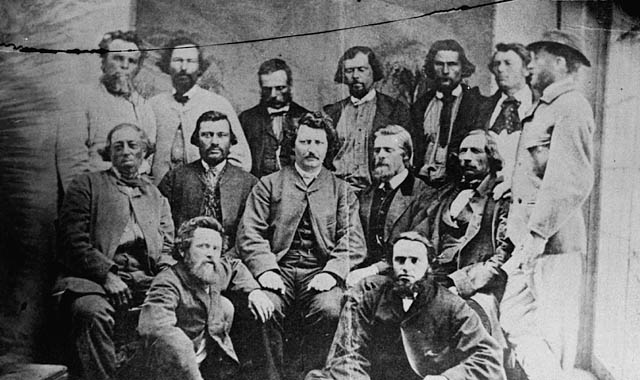
William James Topley Collection [Public domain]
The problem is that the government negotiators could only talk but could not make decisions, and offered up nothing but half-promises and platitudes. Riel continued to remain positive and desired for things to move forward. The team from Ottawa painted a far bleaker picture. It also didn’t help that several members of the pro-Canada resistance escaped from the prison at Fort Garry. Together they planned a military coup and seized direct control of Fort Garry by force. And the plan may have worked if Major Boulton did not hesitate in his march on Fort Gary. The delay let Riel’s men recapture both Thomas Scott and Major Boulton. Although some made their escape and headed for Ontario, the Métis Council demanded that Boulton be executed as an example. Still, Riel issued a pardon, hoping to gain favour from Ottawa for his mercy. But in his mercy, Riel angered Thomas Scott. And Scott made sure to make life miserable, fighting with his guards, refusing orders, and shouting insults at Riel whenever he had the chance. Riel had no choice but to put Scott on trial, and despite none of the charges warranting death, Scott would be executed in March 1870. While Riel maintained popular support in Red River, those who escaped to Ontario began to spread false reports about Riel, and a wave of anti-catholic, anti-french, and anti-Métis propaganda spread like wildfire. Ottawa took a two-prong approach, sending a trusted Bishop to help ease tensions and bring Riel alongside. They also authorised Lieutenant-Colonel Garnet Wolsey to lead an armed expedition to take direct military control of Fort Garry. The Wolsey Expedition would have elements of the King’s Royal Rifle Corps and Canadian Militia troops drawn from the Permanent and Active Forces. All while Parliament began negotiations to bring the Red River Colony into Confederation. By May the government passed the Manitoba Act, granting the Red River Colony entry into Confederation as the Province of Manitoba with many of the original fourteen pointed being maintained in the act. By the end of May, a renewed Fenian presence swept across the Vermont border into Quebec resulting in the battles of Trout River and Eccles Hills. Both times the Fenians were tossed back by Canadian Militia and resulted in the arrest of Fenian General John O’Neill by American authorities. Louis Riel would flee Fort Garry ahead of Colonel Wolsey’s arrival in August 1870, and the colony would peacefully accept Canadian control.
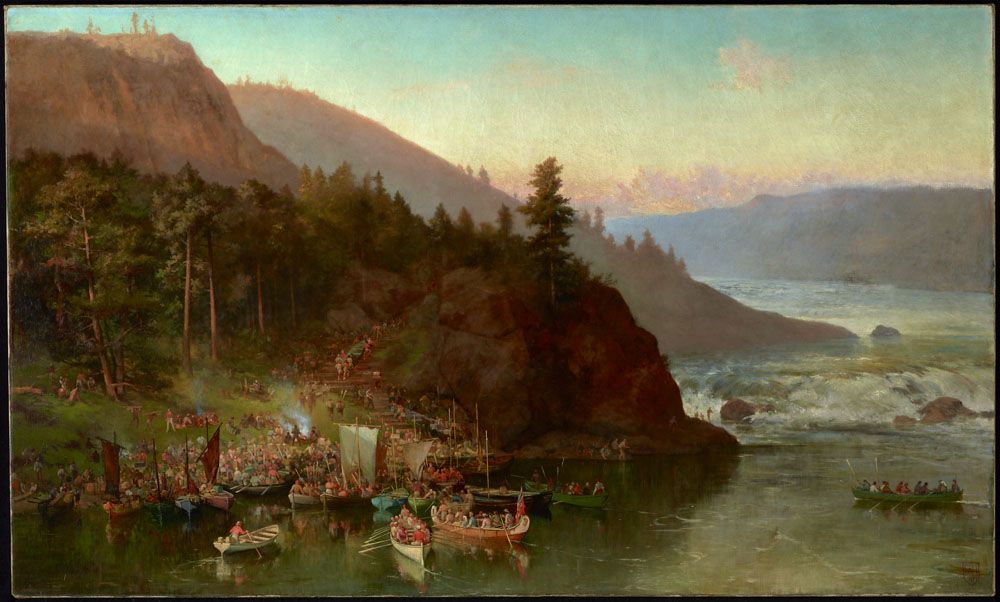
Frances Anne Hopkins [Public domain]
The Washington Treaty of 1871 marked a major shift in the frosty relationship between England and the United States of America. The treaty not only resolved the remaining issues surrounding the Alabama Claims which dated back to the end of the American Civil War but also cleared up a disputed border between the Dakota Territory and the newly created Province of Manitoba. The Fenians had offered to aid the Métis and a splinter group led by General John O’Neill. The group stormed across the ‘border’ and prompted took control of a Hudson Bay post and a Canadian Customs House. Only the learn that when American authorities showed up, they had missed the new official border by several miles north. It would be the final action by O’Neill and the Fenians who had been supplanted in North America by Clan Na’Gaal. The treaty also had one final effect, now that a formal peace had been established with the United States the fears of annexation were quelled. The British Army would begin to pull out the last units from Canada. This would see the Canadian Government form it’s first independent regiment, The Regiment of Canadian Artillery under the Permanent Force. The regiment contained two batteries which would man Fort Henry in Kingston and The Quebec Citadel in Quebec City. A demi-battery would also be formed to guard Fort Garry. In November 1871 the last two British regiments would board troopships and leave Canada on the 11th of the King’s Royal Rifle Corps departed from Quebec City, and on the 25th the 78th (Highlander) Regiment departed Halifax.
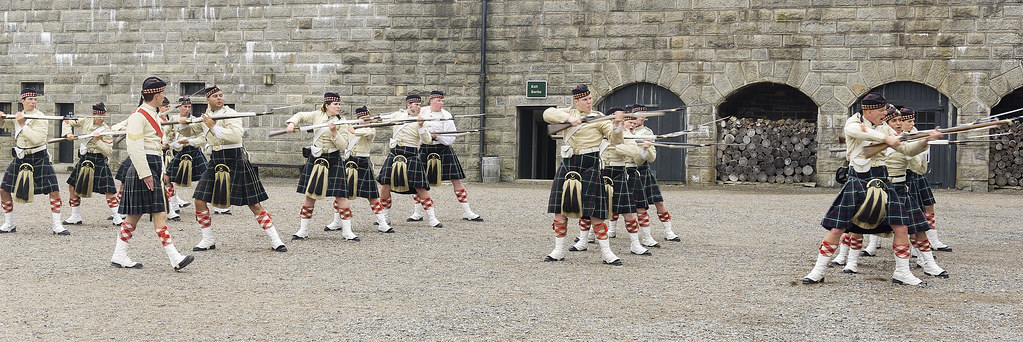
Sony a6000 – Sony E PZ 16-50mm 1:3.5-5.6 OSS
Despite being a crucial part of Confederation, little had been done in regards to building the transcontinental railroad. With negotiations towards bringing British Columbia into Canada beginning the Federal Government chartered the Canadian Pacific Railroad. And the whole thing seemed well and good when the railroad went out to private companies to compete for the contract. The troubles would stay well hidden as a company began to pay large amounts of money towards the reelection campaigns of certain members of the Conservative Party. On the understanding that they would be picked as the winning bidder and keep American capital out of the project. And in 1873 the Conservatives took the majority to continue their hold on the Canadian Government. Sir John A. MacDonald in response to growing unrest in the vast North-West Territory formed the second Federal Police Force, the North-West Mounted Police. Part Militia, Part Police, the NWMP would provide much-needed law enforcement in Canada’s Wild West and provided sovereignty patrols along the American border mostly to keep out the flow of illegal American whiskey. The Pacific Bribery scandal would hit full force in November when a young Liberal back-bencher discovered the money and the fact that American money had been funnelled into the railroad project. Those involved in the scandal quickly resigned, even Sir John A who was only involved indirectly lost control of the Party and stepped down. As the government fell, the Governor-General turned to the Liberals and their leader Alexander MacKenzie to form a new Parliament. MacKenzie would call for general elections and the Canadians angered at the actions of the Conservatives turned over control of the House to MacKenzie and the Liberals. Both British Columbia and Prince Edward Island would join as Provinces in 1875 and a year later the Parliament Buildings in Ottawa would finally see completion. In an effort to better the leadership of the Canadian Militia the first group of eighteen cadets would begin their training in the new Military College of Canada in the former Royal Navy Dockyard in Kingston operating in many of the old buildings. Queen Victoria would grant a Royal designation in 1878, the name Royal Military College of Canada still resonates today. The final act of the MacKenzie Government would be turning Dominion Day, the 1st of July into a Public Holiday that same year.
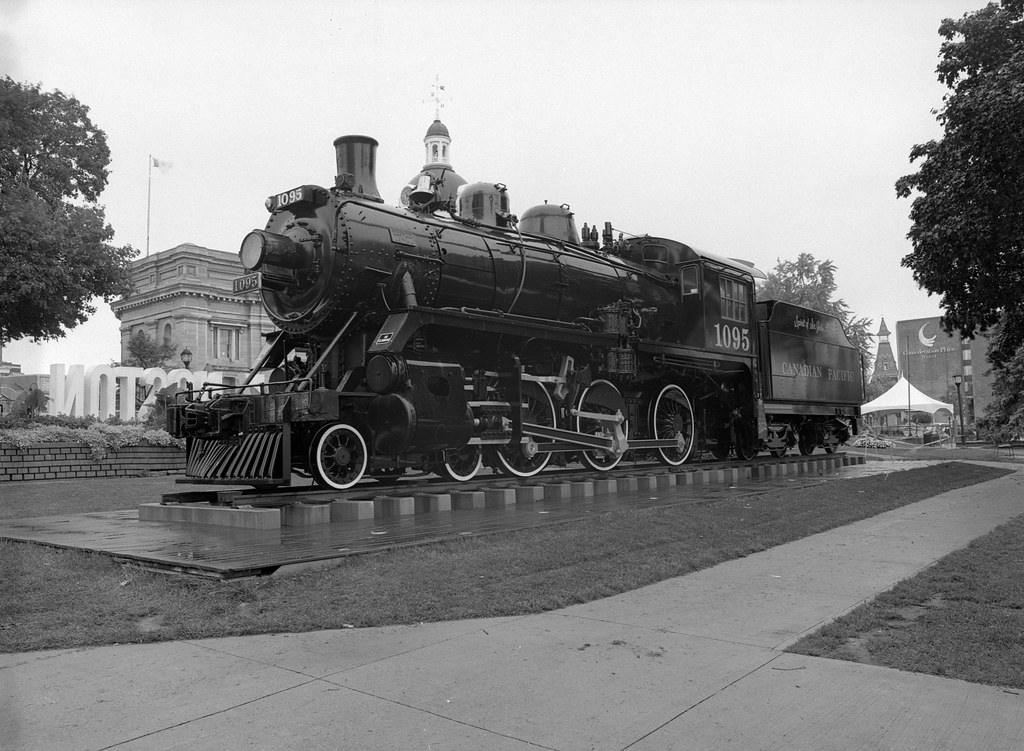
Mamiya m645 – Mamiya-Sekor C – Ilford HP5+ @ ASA-200 – Pyrocat-HD (1+1+100) 9:00 @ 20C
When an economic downturn swept across Canada and the lack of action by the Liberals provided the perfect in for the Conservative Party. Still, under the leadership of Sir John A MacDonald, they ran on a platform of economic improvement through increased tariffs on import and the construction of the Pacific Railroad. The Canadians liked what they heard and returned Sir John A and his Conservatives to power. And they fulfilled their promise and in 1881 near Bonfield, Ontario the first spike in the new Canadian Pacific Railroad, now run through a Crown Corporation began construction. The new line also saw a surge of railroad construction from rail operators big and small in the south. Both the Northern Railway Company of Canada and the Hamilton & North-Western Railroad desired to link up with the CP line, but neither had the capital to fund such a major push north and entered into an uneasy merger becoming the North & North-Western Railroad. It produced enough capital to begin construction of the new line. Grand Trunk seeing an opportunity bought out their biggest competitor, Great Western Railway in 1882 but continued to operate the network under the Great Western name. The same year, Ottawa, in an effort to better control the North-West Territory established the city of Regina as the territorial capital. And to better train and coordinate the Permanent force, three ‘schools’ or rather Regiments were established to train men in Infantry, Artillery, and Calvary. Married, Widowed or Spinster women gained the right to vote in Municipal elections in 1884. But in the North-West troubles that had been brewing since the establishment of the Territory were about to come to ahead. Increased expansion by both Canadian and American settlers combined with the collapse of the Buffalo population removing the food source of the Indigenous population that continued to be forced further west saw their entire way of life and their lives threatened. Ottawa in an effort to improve their lot expanded the Residential School System by making attendance mandatory for all children. The system which had first been implemented by the order of Sir Francis Bond-Head in 1834. The 1884 amendment to the Indian Act saw more schools constructed across Canada. All were located well off any settlements requiring children to remain. The popular opinion of the day that this would be a good thing, teaching the children modern methods in farming and being able to assimilate into western culture. Sadly the schools became a centre of cultural genocide as the children were forced to endure physical, mental, and sexual violence. Often at the hands of Federal Employees and members of the mainline Churches in Canada. These actions to improve their lot did not sit well with many, who saw Ottawa’s actions as government over-reach and turned to the only man they saw as their saviour. Louis Riel who had been living in exile in the United States since his resistance at the Red River Colony gladly returned to the North-West. Riel figured he could use the same playbook, returned to the district of Sastaketwan gathered his supporters, and formed a provisional government and demanded negotiations with Ottawa. But only a small portion of the population supported Riel and rising violence by other Indigenous Groups turned the general population against the Métis leader. Riel also never expected the presence of the North-West Mounted Police and smaller local militia units. Raids against Frog Lake and Fort Battleford by the Cree only served to fuel the fire and while Riel insisted they had no connection to his movement, Lieutenant-Governor Edgar Dewdney declared that the Cree and the Métis were allied. Open rebellion broke out and while the Métis saw initial success, the arrival of a large army of Canadian Militia troops thanks to the Canadian Pacific Railroad would sound the movement’s death knell. A three-day siege in May 1885 by a combined force of Canadian Militia and the North-West Mounted Police resulted in a total route of Riel’s forces. Riel would be quickly captured, arrested and imprisoned by the North-West Mounted Police. The final action of the rebellion took place on the 3rd of June at Loon Lake. On the 28th Riel’s trial opened and while promised a jury of his peers, none could be found, and it would be white, protestant, local residents. Riel would plead not guilty to six treason charges, but a three-day trial returned a guilty verdict. And while the jury did surprisingly make a recommendation of mercy, the judge handed down a death sentence. Two other Cree leaders were found guilty and got life sentences. Pîhtokahanapiwiyin (Pound Maker) and Mistahi-maskwa (Big Bear), would have their sentences commuted due to health concerns. Both would ultimately die due to their time in prison. Riel would hang on the 16th of November, 1885 at the North-West Mounted Police Depot in Regina.

Sony a6000 + Sony E PZ 16-50mm 1:3.5-5.6 OSS
The North-West Rebellion had the effect of forcing the rapid construction of the Canadian Pacific Railroad and the last spike was driven in the Canadian Rockies in late November 1885 although the first train wouldn’t drive through until summer of the following year. The Third Welland Canal opened to ship traffic in 1887, the canal aimed primarily at larger ship traffic changed the route bypassing the downtown of St. Catherines. The primary reason was to avoid the meandering nature of the Canal Valley. So the second Canal remained in operation to continue to support the industry that continued to operate along the route. Grand Trunk would buy up the now cash-strapped North & North-Western railway in 1888, which gave them access to the now completed rail link to the Canadian Pacific line at North Bay. It also made them the single largest rail operator in Canada. Veterans of the Fenians Raids along with those who were a part of the Wolsey Expedition to the Red River Colony in an effort to gain some form of recognition of their service began to hold a day of remembrance for their fallen comrades. Canada’s first Decoration Day was held on the 2nd of June 1890, the anniversary of the Battle of Ridgeway. While initially small, by 1891 the event attracted some 30,000 participants. The three schools in the Canadian militia would be transformed into formal regiments in 1893 with the formation of the Royal Canadian Regiment (Infantry), Royal Canadian Dragoons (Cavalry), and Royal Canadian Artillery. The same year marked the discovery of gold in the Klondike district of the North-West Territory. As word spread a mass migration of fortune seekers flooded the region forcing the Canadian Government to carve out the Yukon Territory in 1898.
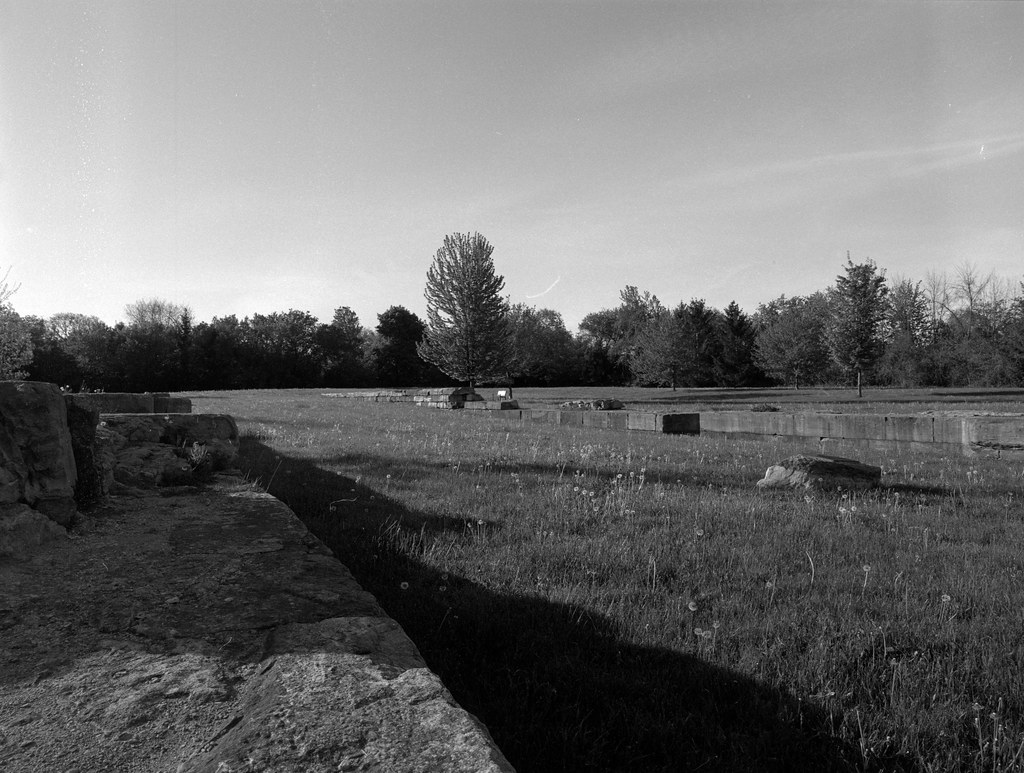
Mamiya m645 – Mamiya-Sekor C 35mm 1:3.5 N – Ilford FP4+ @ ASA-100 – Kodak D-23 (Stock) 6:00 @ 20C
England’s wars of colonial expansion had shifted to the African continent. With the Anglo-Zulu war of 1879 and the First Boer War of 1880-1 and in 1899 a second Boer conflict had erupted in what is today South Africa. Using the Governor-General, the British Parliament pressured Canadian Prime Minister Sir Wilfred Laurier to send Canadian troops to shore up British troops. The idea proved divisive along racial lines, with English-Canadians supporting the idea, while French-Canadians would have no part. To compromise, Laurier authorised a force of 1,000 officers and men. Canadian troops faced terrible conditions in South Africa and eventually some 7,000 men would serve and five Canadians would be awarded the Victoria Cross. Under the British, Canadian Officers were often looked down upon and Canadians had to rely on the British service battalions which prioritised British over Canadians and other Empire troops. The actions of the British Army galvanised the Canadian Militia into forming an identity of their own. By the end of the war in 1901, the Canadian Government authorised the creation of a professional Officers Corps, along with a Medical and Service Corps. The British government would be forced into viewing Canadian militia officers on equal footing with their own according to the rank structure. By 1905 the districts of Saskatchewan and Alberta were welcomed into Confederation as Provinces. Canada had survived its youth, a nation connected shore to shore by rail, telegraph, and even telephone. Major cities were turning to electricity to light their homes and streets. The government worked and they had a small working professional army with a Canadian Officer in overall command. Only the seas around Canada were defended by the British. Major industry put cities like Hamilton and Toronto on the map and factories churned out modern manufactured goods. And the industry of raw material continued to supply those factories and factories around the world. And while you won’t recognise the Canada of 1905 with chunks of Ontario, Manitoba, and Quebec still being parts of the North-West Territories it was beginning to come together. But in Europe storm clouds had again started to gather which would not only change the world but Canada forever.
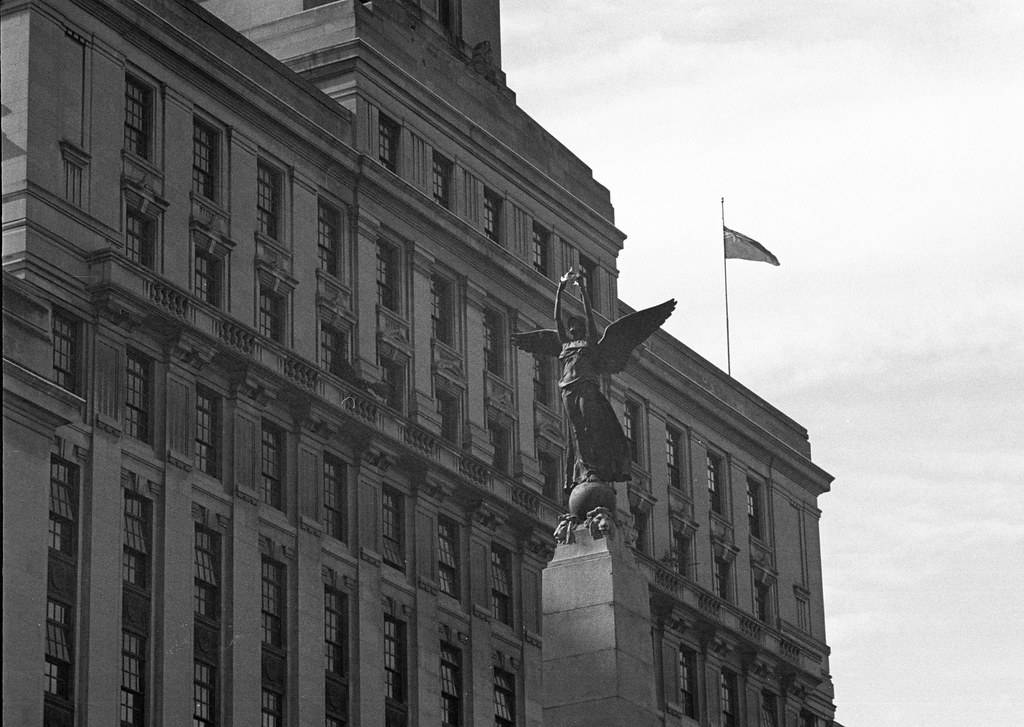
Pentax Espio 115M – Pentax Zoom Lens 38-115mm 1:3.9-10.5 – Kodak TMax 400 @ ASA-400 – Kodak HC-110 Dil. B 5:30 @ 20C
Canada is a settler state, the statement rings true. Our early history is one that is flawed and filled with missteps and horrendous choices that we are still learning to face today. Confederation was built by white, male Europeans. There was no thought given to women and indigenous peoples. These men learned from the colonial governments and put in systems that were carried over. By our modern standards, the Fathers of Confederation could have done much better. And it may have prevents or at least reduced the continued racial tensions we have today in Canada. These racial tensions are ones that I have never felt myself as I am both white and male. The trial of Patrick Whelan was a joke, an investigation in 1972 concluded that his .32 calibre pistol could not have fired the shot that killed McGee. And the term Rebellion, until recently would be used to describe Louis Riel’s resistance at Red River and would ultimately lead to his death after the North-West Rebellion. And while Pîhtokahanapiwiyin and Mistahi-maskwa would both be exonerated by Prime Minister Justin Trudeau, it is but a drop in the bucket and 135 years too late. The Indian Act (which is still called the Indian Act today in 2020) did more harm than good and along with the Residential School Systems nearly destroyed entire civilizations in what can only be called Cultural Genocide. Plus Canadians were actively involved in guarding Concentration Camps which held Boers during the war in South Africa. But what does that mean today, what can we learn from all this? History is not something you can whitewash or wipe away. Sure you can knock down a statue here, change the narrative, literally whitewash the history books. No, we cannot change the past, nor can we forget it as we Canadians do so easily. But we also shouldn’t be ashamed of it, guilt is something that should hang over our heads like a sword of Damocles, the guilt we feel for the actions of those who came before, should spur us into action. We have a chance to learn from our mistakes, take those lessons and move us to make the future better. It’s all well and good to moan about how it could have been done better in the past, it takes a lot more courage to change things for the future. And I remain proud of our Canadian History for the single reason that we can make a difference, and we can make things better. And while you or I may not have the power to make big changes, we can make small changes. We can tell the stories of the past, encourage people to do thing differently. Learn about our heritage, stop making heroes from our historical figures, start celebrating our diversity. We can change, we must change. Or the cycle of history will continue.